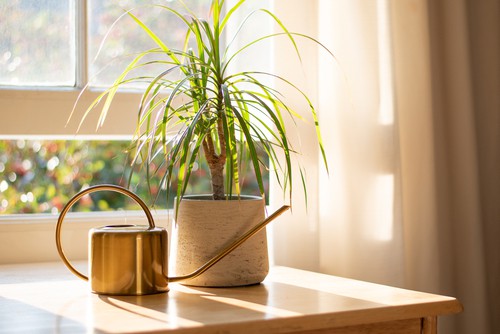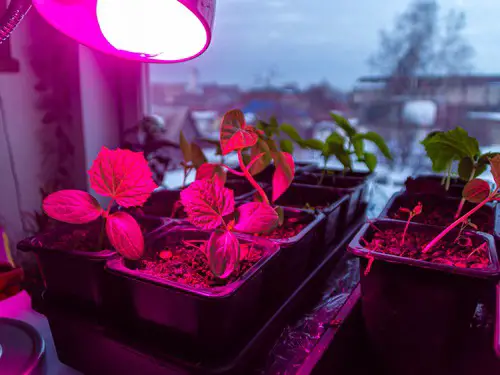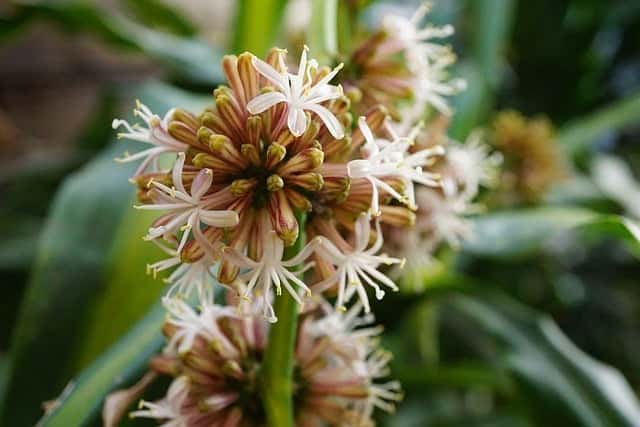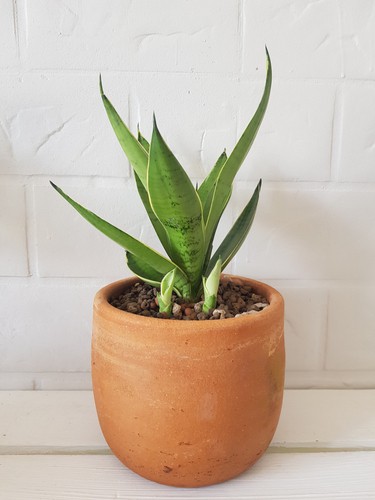Dracaena plants are a popular choice for indoor gardening enthusiasts, thanks to their striking appearance and low maintenance requirements. However, like all plants, they can develop issues that require attention. One common problem with dracaenas is drooping leaves, which can be a sign of a variety of issues.
Understanding the causes of dracaena plant drooping is essential for reviving a struggling plant. Some of the most common causes include overwatering, underwatering, poor water quality, and insufficient light.
Signs of dracaena plant drooping can include yellowing leaves, brown tips, and wilting foliage. Fortunately, with proper care and attention, it is often possible to revive a drooping dracaena and restore it to its former glory.
Key Takeaways
- Dracaena plants can develop drooping leaves due to a variety of issues.
- Signs of a drooping dracaena include yellowing leaves, brown tips, and wilting foliage.
- With proper care, it is often possible to revive a drooping dracaena and restore it to health.
You might also like:
Understanding Dracaena Plants

Dracaena plants are slow growers that are native to Africa and tropical regions of Asia. These plants are also known as dragon trees or corn plants and are popular garden plants because of their unique foliage and easy care requirements. Dracaena plants are often grown indoors as houseplants due to their ability to thrive in low light conditions.
Dracaena plants are known for their tall, slender stems and long, narrow leaves. The leaves can be solid green or variegated with stripes or spots of white, yellow, or red. Some species of Dracaena plants can grow up to 10 feet tall, while others are more compact and bushy.
One important thing to keep in mind when caring for Dracaena plants is that they are sensitive to overwatering. These plants prefer to be kept on the drier side and should only be watered when the soil is completely dry. Overwatering can lead to root rot and cause the plant to droop or wilt.
Another factor to consider when caring for Dracaena plants is their light requirements. These plants prefer bright, indirect light but can tolerate lower light conditions as well. If the plant is not getting enough light, it may become leggy or develop brown spots on the leaves.
Dracaena Plant Drooping – 3 Common Problems
Dracaena plants are known for their striking appearance and easy-to-care-for nature. However, like any other plant, they can sometimes experience issues such as drooping leaves. Drooping can be caused by a variety of factors, including overwatering, underwatering, light and temperature conditions, and pest and disease issues.
Overwatering and Underwatering
One of the most common causes of drooping in dracaena plants is overwatering or underwatering. Overwatering can lead to root rot and standing water in the soil, which can suffocate the roots and prevent them from taking up water. Underwatering, on the other hand, can cause the soil to become too dry and lead to wilting and drooping.
To prevent overwatering, it is important to ensure that the soil is well-draining and that the plant is not sitting in standing water. It is also important to avoid watering on a schedule and instead water the plant when the top inch of soil feels dry to the touch.
Underwatering can be prevented by ensuring that the plant is watered regularly and that the soil is kept moist but not waterlogged.
Light and Temperature Conditions

Dracaena plants require bright, indirect light to thrive. If they are not receiving enough light, they can become weak and droop. On the other hand, if they are exposed to direct sunlight or temperature extremes, they can become stressed and droop as well.
To prevent drooping due to light and temperature conditions, it is important to place the plant in a location with bright, indirect light and to avoid exposing it to direct sunlight or temperature extremes. If the plant is placed near a window, it is important to ensure that it is not too close to the window or exposed to drafts from a nearby heater.
Pest and Disease Issues
Drooping can also be caused by pest and disease issues such as mealybugs and spider mites. These pests can cause damage to the leaves and prevent the plant from taking up water, leading to drooping and wilting. Diseases such as root rot can also cause the roots to become damaged and prevent the plant from taking up water.
To prevent pest and disease issues, it is important to regularly inspect the plant for signs of infestation or disease. If pests or diseases are detected, it is important to take action immediately to prevent further damage to the plant. This may involve using insecticides or fungicides or removing infected leaves or stems.
Signs of a Drooping Dracaena
Dracaena plants are known for their hardiness and ability to thrive in a variety of conditions, making them a popular choice for indoor and outdoor gardening. However, even these hardy plants can sometimes experience problems, such as drooping leaves, which can be a sign of underlying issues.
When a dracaena plant is drooping, it may be a sign that the plant is not receiving the proper care or environmental conditions it needs to thrive. Some of the signs of a drooping dracaena plant include:
1. Wilted Leaves
The leaves of a drooping dracaena plant may appear wilted or limp, and may even be curling or turning yellow or brown.
2. Yellowing Leaves
Yellowing leaves can be a sign of a drooping dracaena plant. This may be caused by a lack of water or nutrients, or by exposure to too much sunlight.
3. Leaf Drop
In severe cases, a drooping dracaena plant may begin to drop its leaves. This can be a sign of a serious problem, such as root rot or a pest infestation.
4. Brown Tips

Brown tips on the leaves of a drooping dracaena plant can be a sign of a variety of issues, including overwatering, underwatering, or exposure to too much direct sunlight.
5. Scorch
Scorching of the leaves can occur when a dracaena plant is exposed to too much direct sunlight or heat, or when it is not receiving enough water.
Reviving a Drooping Dracaena
If you notice that your Dracaena plant is drooping, it is a sign that something is wrong. However, with proper care and attention, you can revive your plant and bring it back to its healthy state.
1. Check the Water Schedule
One of the most common reasons for a drooping Dracaena is dehydration caused by underwatering. Dracaena plants are drought-resistant and do not need to be watered more than once a week. However, if the soil feels dry to the touch, it is time to give your plant a drink. Water your plant thoroughly and ensure that all of the soil gets moist. You can use a moisture meter to double-check that you are providing enough water.
2. Trim Overgrown Stems
If your Dracaena plant has overgrown stems, it can cause stress on the plant, leading to drooping or wilting. To prevent this, trim back any overgrown stems to encourage new growth. Use clean, sharp pruning shears and make cuts at a 45-degree angle.
3. Proper Care
Dracaena plants require proper care to thrive. Ensure that your plant is getting the right amount of light and is not exposed to extreme temperatures. Keep the soil moist but not waterlogged, and avoid over-fertilizing your plant.
4. Recovering a Healthy Dracaena
With the proper care, your drooping Dracaena can recover and become a healthy plant once again. Be patient and consistent with your care routine, and your plant will reward you with beautiful foliage and a healthy appearance.
Repotting a Dracaena Plant

Repotting a Dracaena plant is an essential task to ensure the health and growth of the plant. When a Dracaena plant becomes root-bound, the roots become compacted and can no longer absorb water and nutrients effectively. Repotting the plant into a larger container with fresh soil can help to alleviate this issue.
Before repotting a Dracaena plant, ensure that the new container has adequate drainage holes. These holes will allow excess water to drain out of the pot and prevent water from accumulating in the bottom of the container. If the container does not have drainage holes, the plant may develop root rot, which can be fatal.
When selecting soil for the new container, it is important to choose a well-draining soil mixture. A mixture of perlite, peat moss, and potting soil can provide the necessary drainage and nutrients for the plant. It is also important to avoid using heavy soils that can retain water, as this can lead to drainage issues and root rot.
To repot the Dracaena plant, gently remove it from its current container and loosen any compacted roots. Place the plant in the new container and add fresh soil around the roots, ensuring that the soil is evenly distributed. Water the plant thoroughly and place it in a location with adequate sunlight.
If the Dracaena plant is severely root-bound, it may be necessary to prune the roots before repotting. This can be done by gently removing the plant from its container and cutting away any circling or tangled roots. After pruning, the plant can be repotted as usual.
After repotting, it is important to monitor the plant for any signs of stress or drooping. If the plant continues to droop, it may be necessary to check for drainage issues or root rot. Using a saucer under the pot can help to prevent water from accumulating in the bottom of the container and causing these issues.
Water Quality and Dracaena Plants
Water quality plays an essential role in the health of Dracaena plants. The quality of water used to irrigate these plants can impact their growth and overall health. Here are some factors to consider when it comes to water quality and Dracaena plants:
Chlorine
Chlorine is a common chemical used to disinfect water. While it is effective at killing harmful bacteria and pathogens in water, it can be detrimental to Dracaena plants. Chlorine can cause leaf tips to turn brown, and the plant may start to droop.
It is recommended to let tap water sit out for 24 hours before using it to water Dracaena plants. This allows the chlorine to evaporate, making the water safer for the plants.
Filtered Water
Using filtered water is a great way to ensure that the water quality is suitable for Dracaena plants. Water filters can remove harmful chemicals and minerals that can be harmful to the plants.
However, it’s important to note that not all filters are created equal. Some filters may not remove all the harmful substances that can affect Dracaena plants. It’s best to use a filter that is specifically designed for removing chemicals and minerals that can harm plants.
pH Levels
The pH level of water can also affect the health of Dracaena plants. These plants prefer slightly acidic soil with a pH level between 6.0 and 6.5. If the pH level of the water is too high or too low, it can affect the soil’s acidity, which can lead to nutrient deficiencies. It’s best to test the pH level of the water before using it to water Dracaena plants..
Dracaena Plant Maintenance

Dracaena plants are low maintenance and drought-resistant, making them a great choice for plant owners who want a plant that is easy to care for. However, it is important to maintain the plant properly to ensure its health and longevity.
One important factor to consider when maintaining a dracaena plant is the amount of water it receives. Overwatering can lead to root rot and drooping leaves, while underwatering can cause the leaves to turn brown and dry out. It is recommended to water the plant thoroughly once a week and allow the soil to dry out slightly between waterings.
Dracaena plants also prefer low humidity environments, so it is not necessary to mist them regularly. However, if the air in the room is particularly dry, misting the leaves occasionally can help prevent them from drying out.
In addition to water and humidity, it is important to provide the plant with adequate light. Dracaena plants prefer bright, indirect light, but can also tolerate low light conditions. If the leaves start to droop or turn yellow, it may be a sign that the plant is not receiving enough light.
Finally, it is important to keep an eye out for any signs of pests or diseases. Common pests that can affect dracaena plants include spider mites and mealybugs, while diseases such as leaf spot can cause the leaves to turn brown and fall off. If any issues are detected, it is important to address them promptly to prevent further damage to the plant.
Preventing Dracaena Plant Diseases
Dracaena plants are generally hardy and resistant to pests and diseases. However, certain conditions can make them susceptible to various problems. Here are some tips to keep your Dracaena plant healthy and prevent diseases:
1. Proper Watering
Overwatering is one of the most common reasons for Dracaena plant diseases. It can lead to root rot and fungal infections. Make sure to water your Dracaena plant only when the soil is dry to the touch. Avoid letting the plant sit in standing water, as this can drown the roots and promote fungal growth.
2. Good Air Circulation
Poor air circulation can also contribute to Dracaena plant diseases. Stagnant air can lead to the growth of mold and fungus, which can affect the plant’s health. Make sure to place your Dracaena plant in a well-ventilated area with good air circulation.
3. Proper Lighting
Dracaena plants require bright, indirect light to thrive. Too much or too little light can lead to leaf drop and other problems. Make sure to place your Dracaena plant in a spot with adequate lighting, but avoid direct sunlight, which can scorch the leaves.
4. Fungus Prevention
Fungal infections can be prevented by keeping the plant’s environment clean and dry. Remove any dead or diseased leaves promptly and avoid getting water on the leaves or stem. You can also sprinkle cinnamon on the soil to prevent fungus growth.
5. Disease Prevention
Preventing Dracaena plant diseases starts with good care practices. Make sure to keep your plant healthy by providing it with the right amount of water, light, and nutrients. If you notice any signs of disease, such as yellowing leaves or black spots, take action immediately to prevent the problem from spreading.
Frequently Asked Questions
How do you save drooping Dracaena?
Saving a drooping Dracaena requires identifying the cause of the drooping and taking appropriate action. Overwatering, underwatering, and temperature stress are common causes of drooping in Dracaena plants.
To save a drooping Dracaena, it is essential to adjust the watering schedule and ensure the plant is not exposed to extreme temperatures. If the plant is severely wilted, pruning may be necessary to encourage new growth.
Why is my Dracaena plant drooping?
A drooping Dracaena plant can be caused by several factors, including overwatering, underwatering, temperature stress, pests, or disease. Dracaenas are sensitive to water and require well-draining soil.
Overwatering or underwatering can cause the plant to wilt and droop. Temperature stress can also cause the plant to droop, especially if it is exposed to cold drafts or direct sunlight.
How do you revive a Dracaena plant?
To revive a Dracaena plant, identify the cause of the problem and take appropriate action. If the plant is drooping due to overwatering, reduce the watering frequency and allow the soil to dry out between waterings.
If the plant is drooping due to underwatering, increase the watering frequency and ensure the soil stays moist. If the plant is exposed to extreme temperatures, move it to a more suitable location. Pruning may also be necessary to encourage new growth.
How do I know if my Dracaena is overwatering?
Overwatering is a common problem for Dracaena plants, and it can cause the leaves to turn yellow and droop. To determine if your Dracaena is overwatered, check the soil moisture level.
If the soil is constantly wet and the plant is drooping, it is likely overwatered. Overwatering can also cause the roots to rot, which can lead to the plant’s death.
What causes Dracaena leaves to turn brown and yellow?
Dracaena leaves may turn brown or yellow due to several factors, including overwatering, underwatering, pests, disease, and nutrient deficiencies. Overwatering can cause the roots to rot, which can lead to yellowing leaves.
Underwatering can cause the leaves to turn brown and dry. Pests, such as spider mites and mealybugs, can also cause damage to the leaves. Nutrient deficiencies, such as a lack of nitrogen or iron, can cause yellowing leaves.
What is the treatment for Dracaena leaf spot disease?
Dracaena leaf spot disease is caused by a fungus and can cause brown spots on the leaves. To treat the disease, remove the affected leaves and ensure the plant is not overwatered.
Fungicides can also be used to prevent further spread of the disease. It is essential to maintain good plant hygiene and avoid overcrowding to prevent the disease from spreading.

Hey, I’m Lisa and I’ve been an avid gardener for over 30 years. I love writing, talking and living in the garden! Feel free to connect with me on my socials below

